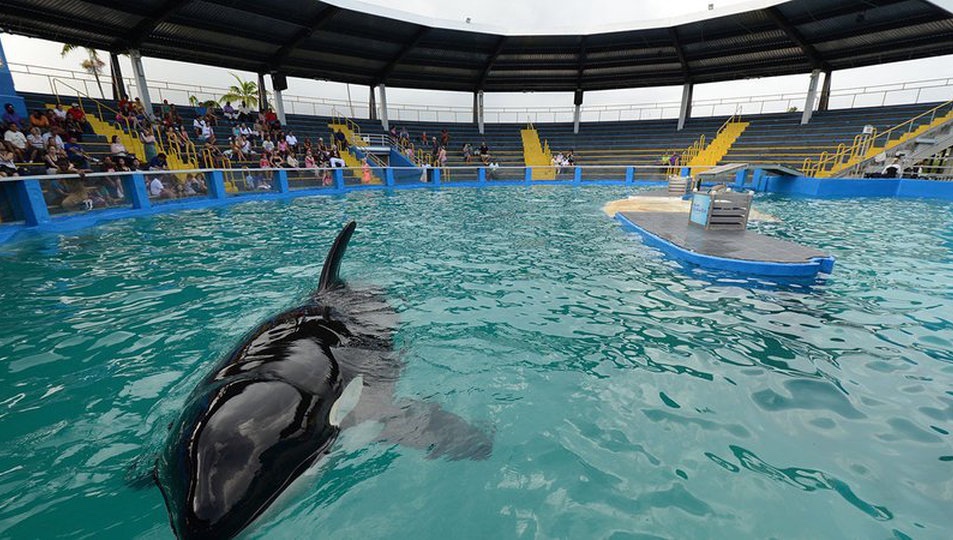The vast majority of captive orcas reside in outdoor tank complexes. Because of this, and their altered lifestyle in captivity, captive orcas are particularly vulnerable to the sun’s harmful rays. Whether they’re interacting with their trainers, performing slide-out behaviours in shows, or lifelessly logging for multiple hours at the surface, orcas in captivity are almost always exposed to the sun during daylight hours which puts them at risk of sunburn. On top of this, their captive environments provide them with no natural protection from the sun.
Wild orcas spend minimal time at the surface as they’re frequently diving to great depths in dark water. In contrast, their captive counterparts spend inordinate amounts of time at the surface, living in barren concrete tanks with shallow depths, crystal clear water, and walls painted with light, reflective colours. Unlike their natural oceanic habitat, their captive environment exposes orcas to elevated levels of ultraviolet radiation exposure which can cause sunburn. To combat this, animal care staff will apply black zinc oxide, an effective sun-block, to the backs of animals who show signs of burn.
However, sunburn is not the only health issue orcas can suffer from due to high levels of ultraviolet radiation exposure in captivity. Although it’s more common in captive pinnipeds, cetaceans can develop cataracts, corneal disease, and lens luxations. As orcas must look up to catch fish that is thrown towards them and to receive/accept commands, they are made to gaze skyward more frequently than they would in the wild. This can damage their eyes and taint their quality of life. At least one serious trainer injury has been linked to a whale’s poor visual acuity, possibly secondary to cataract formation.

Photo via WikiMedia Commons.
As revealed in a 2015 court testimony, Lolita, Miami Seaquarium’s 51-year-old orca, suffers from pterygium (surfer’s eye) which was caused by excessive exposure to ultraviolet radiation resulting in discomfort, impaired visual function, and blindness. Miami Seaquarium has failed to provide Lolita with any form of shade or protection from the sun/weather for over 47 years and has therefore violated section 3.103(3)(b) of the Animal Welfare Act. The government body responsible for enforcing the Animal Welfare Act (AWA), USDA-APHIS, have been historically ineffective at ensuring Miami Seaquarium (and other facilities like it) comply with the regulations designed to provide minimum standards of care for captive marine mammals. Their negligence to enforce the law has allowed for Lolita’s suffering to continue for decades.

Photo sourced via Tarah van de Zande.